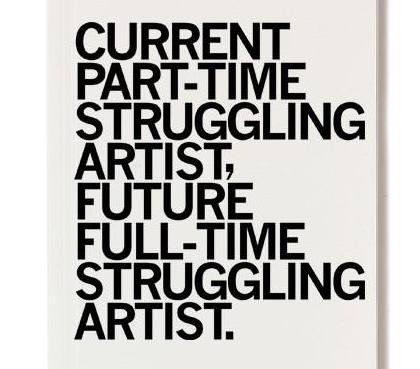Embrace Your Day Job
About a week ago, Hyperallergic published a great, brief assessment of how tough it is to make a living as an artist, and it’s pretty obvious that if you want a life of luxury then you should look into investment banking. Yet the ultimate effect of the piece is heartening. Most of us are on the same life raft. On the whole, artists don’t make much. But we find ways to make ends meet and still make art. And the longer we stick with it, the happier we get. The writer, Benjamin Sutton, was reporting on a study released by Creative Independent, an offshoot of Kickstarter. The group surveyed artists in the U.S., UK, Canada, France and roughly 50 other countries.
What’s most welcome about the piece is how it actually showed that it’s possible to be serious–and reasonably happy–about making art without being able to stay solvent from the proceeds. Which means, more or less, that if you think Van Gogh was a failure, then you need at attitude readjustment, friend. Failure isn’t about money when it comes to creative endeavors.
Here were some of the finding:
- The majority of visual artists working today make less than $30,000 per year. (Average median income in the U.S. is nearly double that.)
- Only 12% of respondents said that gallery sales of their work have been helpful in sustaining their practices, and grants ranked similarly low.
- Two thirds said they had to rely on freelance work to make a living. The next largest segment do work unrelated to art for the bulk of their income.
- Half of all artists surveyed said they make less than 10 percent of their income from their art.
- Schools don’t prepare artists for a world that runs on the exchange of money–though it’s hard to see from the findings what art schools could actually do to help artists earn more. A little more preparation for how one needs to find other ways to make a living in addition to art maybe . . .
- Just under a third of respondents felt that gallery representation did little to improve their financial stability. The gatekeepers are finding it just as difficult to stay in the black as the artists themselves.
- The Malcolm Gladwell rule of 10,000 hours of practice as a threshold for mastery–in this case ten years of work–makes a difference. Artists who stick to a professional regimen for a decade earn more and find themselves much happier with the life of making art. After two decades, happiness rises even more.

Comments are currently closed.